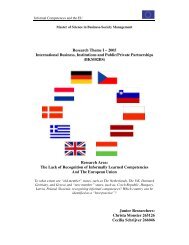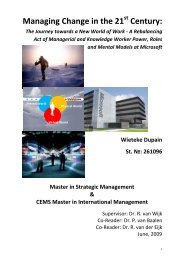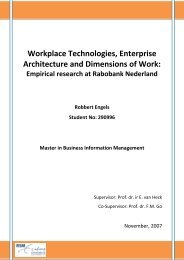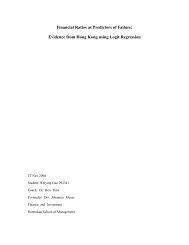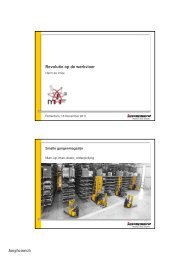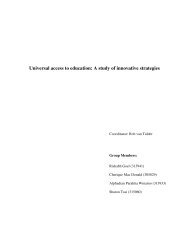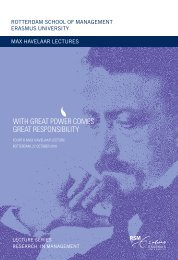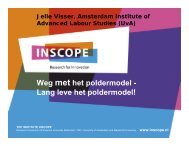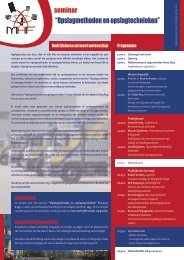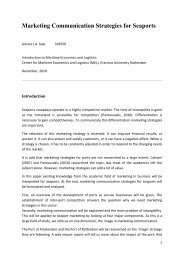here - ERIM - Erasmus Universiteit Rotterdam
here - ERIM - Erasmus Universiteit Rotterdam
here - ERIM - Erasmus Universiteit Rotterdam
Create successful ePaper yourself
Turn your PDF publications into a flip-book with our unique Google optimized e-Paper software.
A validation Study of House of Quality key performance indicators<br />
4.2 Results Quantitative research<br />
This section presents the results of the quantitative research study. Several attributes investigated in<br />
the first phase are integrated into the survey model. Based on the SERVQUAL model, an online<br />
questionnaire was designed to measure gaps between the actual performance and the member’s<br />
expectations of the online union. By integrating the Kano model we are able to categorize the<br />
attributes according to the influence of each of the attributes on member’s satisfaction. The<br />
collected data will be used to test the propositions formulated in section 4.1.2. Hence, data collected<br />
by the online survey will function as input for the construction of the House of Quality (Tan and<br />
Pawitra, 2001).<br />
Section 4.2.1 presents the demographics of the research population w<strong>here</strong>as section 4.2.2 presents<br />
the statistical analysis of the survey data. Based on qualitative research to the needs of the members<br />
we conducted five dimensions (Table 2).A factor analysis will be performed to test the structure of<br />
the composed dimensions. After the factor analysis, we will execute a multiple regression analysis to<br />
test for the influence of each of the dimensions on the overall performance of the online union in<br />
section 4.2.3<br />
4.2.1 Sample description<br />
Within three weeks 120 respondents have finished the questionnaire. From a total sample of 1000<br />
registered members this results in a response rate of 12%. Except from the question “What is the<br />
name of your company”, all questions were mandatory which resulted in a dataset without missing<br />
values. Before starting the analysis we filtered the data on respondents duration time to complete<br />
the questionnaire. Respondents whose duration time was shorter than seven minutes were filtered<br />
out. Based on the average time of 12,5 minutes, a duration time less than seven minutes assumes<br />
that they have not filled in the questionnaire seriously enough. After expectation of the dataset, four<br />
respondents were filtered out resulting in a final dataset of 116 respondents.<br />
Based on the demographic questions we shaped a general descriptive profile of the member<br />
population of the online union (Table 3). Specific work and union related characteristics will be<br />
discussed later in this section. From the general characteristics as presented in Table 1, we can<br />
conclude that the majority of the sample is male, merely of the age of 50 or higher, educated with a<br />
MBO or HBO (Bachelors) degree, full-time employed, living together with an employed partner and<br />
merely settled in the region Noord-Brabant. As mentioned before, the main target group of the<br />
online union are young professionals. T<strong>here</strong>fore it is surprising to see that most of the respondents<br />
are of the age of 50 or higher. One explanation might be that at the start of the online union a<br />
54




